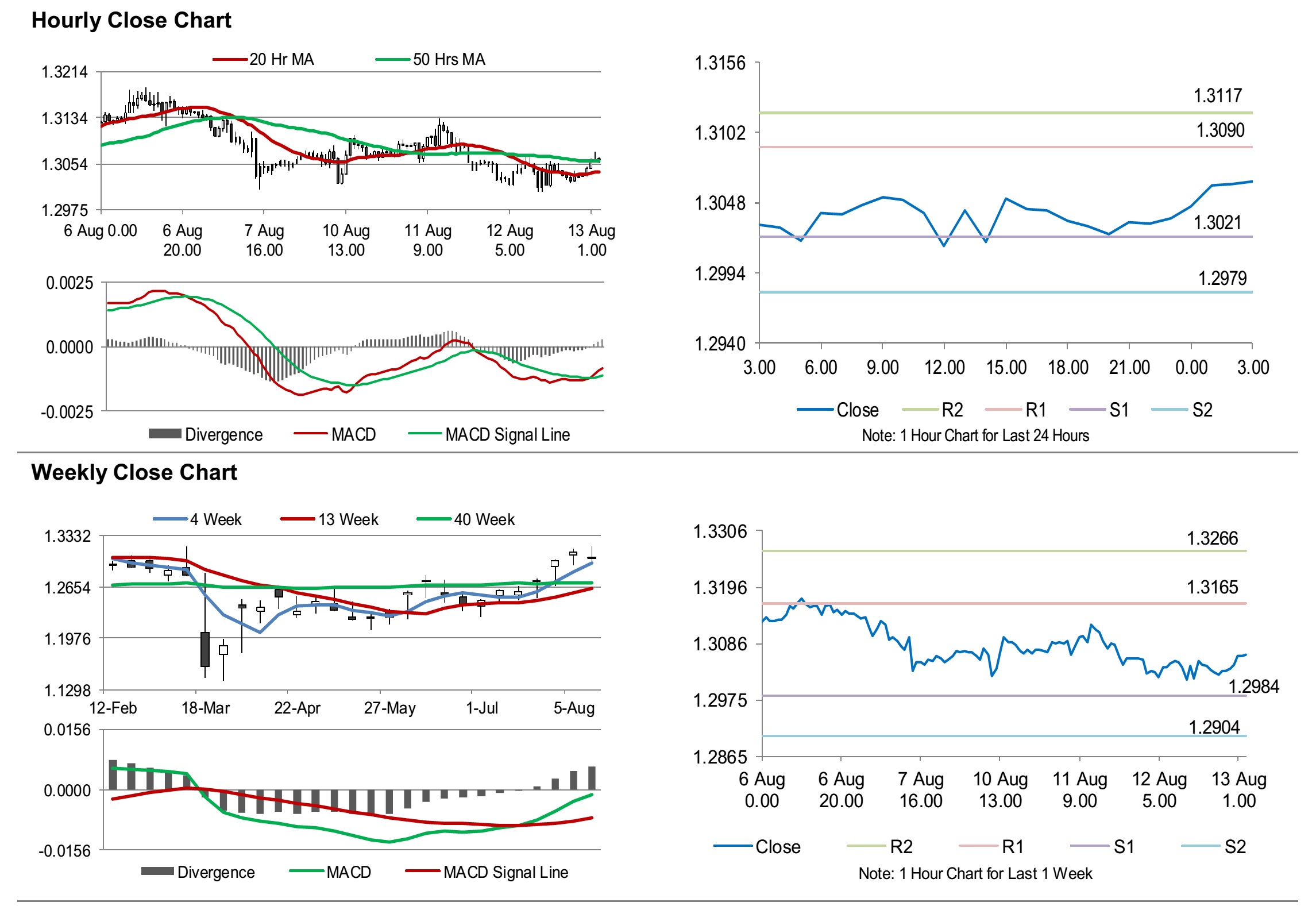For the 24 hours to 23:00 GMT, the GBP declined 0.16% against the USD and closed at 1.3036, after Britain’s economy entered into recession.
On the data front, UK’s gross domestic product plunged 20.4% on a quarterly basis in the second quarter of 2020, recording its biggest deterioration since 1995. In the previous quarter, GDP had recorded a fall of 2.2%. Moreover, total trade surplus narrowed to £5.3 billion in June, compared to a surplus of £7.7 billion in the prior month. Further, the NIESR GDP estimate declined to 20.4% in three months ended July, compared to a revised drop of 18.7% in the previous month. Meanwhile, industrial production advanced 9.3% on a monthly basis in June, more than market anticipations and compared to a revised rise of 6.2% in the prior month. Additionally, manufacturing production rose jumped 11.0% on a monthly basis in June, surpassing market forecast and compared to a revised rise of 8.3% in the prior month. Furthermore, the RICS housing price balance rose to 12.0% in July, compared to a revised -13.0% in the previous month.
In the Asian session, at GMT0300, the pair is trading at 1.3064, with the GBP trading 0.21% higher against the USD from yesterday’s close.
The pair is expected to find support at 1.3021, and a fall through could take it to the next support level of 1.2979. The pair is expected to find its first resistance at 1.3090, and a rise through could take it to the next resistance level of 1.3117.
Amid lack of macroeconomic releases in the UK today, investor sentiment would be determined by global macroeconomic factors.
The currency pair is trading above its 20 Hr moving average and showing convergence with its 50 Hr moving average.

